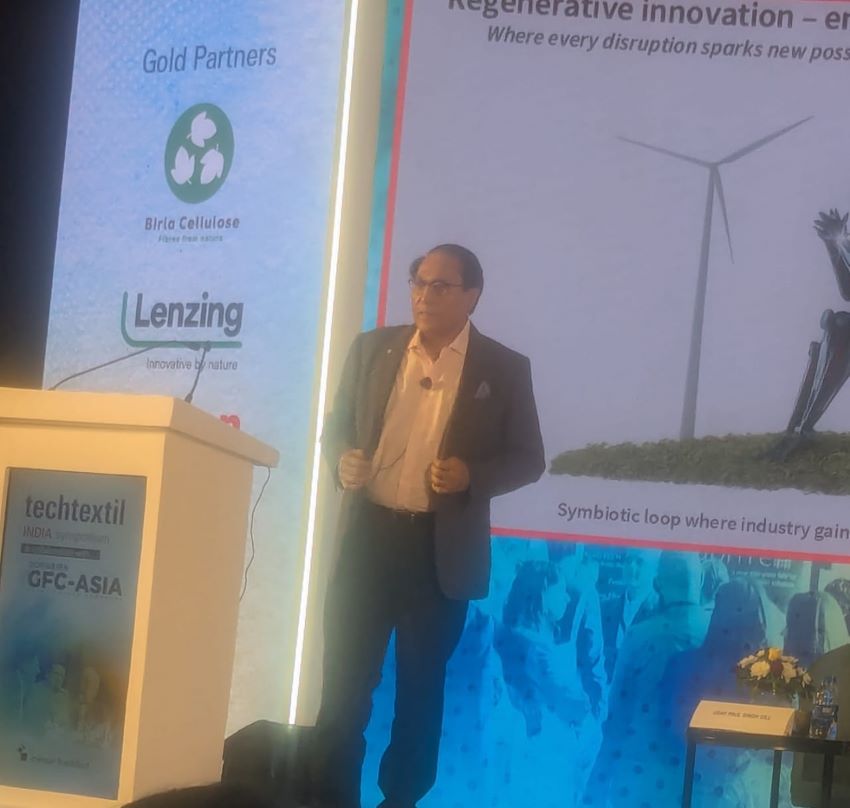Dependence on borrowed technology, lack of continuous and sustained R&D initiatives have kept India’s domestic textile machinery far behind. For financial year 2014-15, the production value of mainstream textile machinery, accessories, spares and consumables improved only by three per cent. The industry has since struggled to sustain momentum, and is on a flat growth path despite the continuation of capex-inducing concessional subsidy based schemes such as TUFS.
The lackluster performance after financial year 2014 was mainly due to the hit taken by the overall synthetic filament yarn industry, which accounts for 10 per cent of all textile machinery output. In addition, the synthetic and man-made fiber sector is plagued with overcapacity situations. This excess capacity situation, owing mainly to the slowdown in the demand for synthetic textiles, has impacted investments and thus take-off for textile machinery, despite availability of concessional schemes to boost capex via new projects. The scenario is not likely to change in the near future due to continued weak demand for textiles.
The only ray of hope is the successful run enjoyed by the cotton and spun yarn spinning mill machinery. This has been solely due to the capability of the spinning machinery segment to meet demand. Favorable and special textile policies have played a pivotal role in mobilising new investment in cotton or spun yarn mill projects. As a result, the domestic production of cotton or yarn spinning machinery has become the strongest link in the machinery value chain, accounting for almost 50 per cent of textile machinery production.
Indian textile machinery sector flounders
- 1
- 2
- 3
- 4
- 5
- 6
- 7
- 8
- 9
- 10
No A-Grades for Climate: What the fossil-free fashion scorecard reveals about in…
For years, the global fashion industry has promised a cleaner, greener future but 2025’s Fossil-Free Fashion Scorecard by STAND.earth offers... Read more
Wired Threads: How India’s textile backbone is powering the smart apparel future
India’s huge textile industry, long celebrated for its command over cotton and competitive manufacturing scale, is going through a foundational... Read more
The New Core Competency: How sustainability and advanced fabrics are driving Ind…
The SportTech Pavilion at Techtextil India, hosted by Concepts N Strategies, concluded with a unanimous declaration: for India to successfully... Read more
New EU import rules set to raise prices for Shein and Temu, boosting European re…
Europe’s fashion and textile scenario is on the verge of its most consequential structural shift in over a decade. The... Read more
Global apparel trade rebalances in 2025 as Europe rises, Asia stumbles: Wazir Ad…
As the global apparel economy enters the final quarter of 2025, trade flows across major markets reveal a sector facing... Read more
Tariffs, turbulence and tenacity, India’s textile sector finds new strength
India’s textile and apparel export sector is showing a remarkable capacity to adapt and thrive in one of the most... Read more
Future Fiber Demand and the Chemical Recycling Imperative: Global industry eyes …
The global textile industry is entering a period of exponential growth and profound technological transformation, according to key figures speaking... Read more
Regenerative innovation and the Human-Centric future of textiles
The global textile industry is at a crossroads where mere efficiency and profit no longer guarantee survival. This was the... Read more
Profit with Purpose: Inside the 35% margin boom in upcycled fashion wholesale
The secondhand wholesale sector, once seen as the back end of fashion, is now leading a quiet revolution, one that... Read more
Beyond CMT: Collaboration, not competition, is India’s new growth strategy
The journey for India’s activewear industry to move "Beyond CMT" (Cut, Make, Trim) and capture the global premium mandate is... Read more












